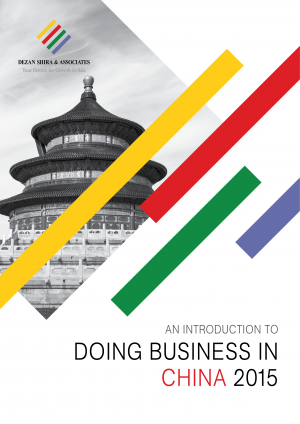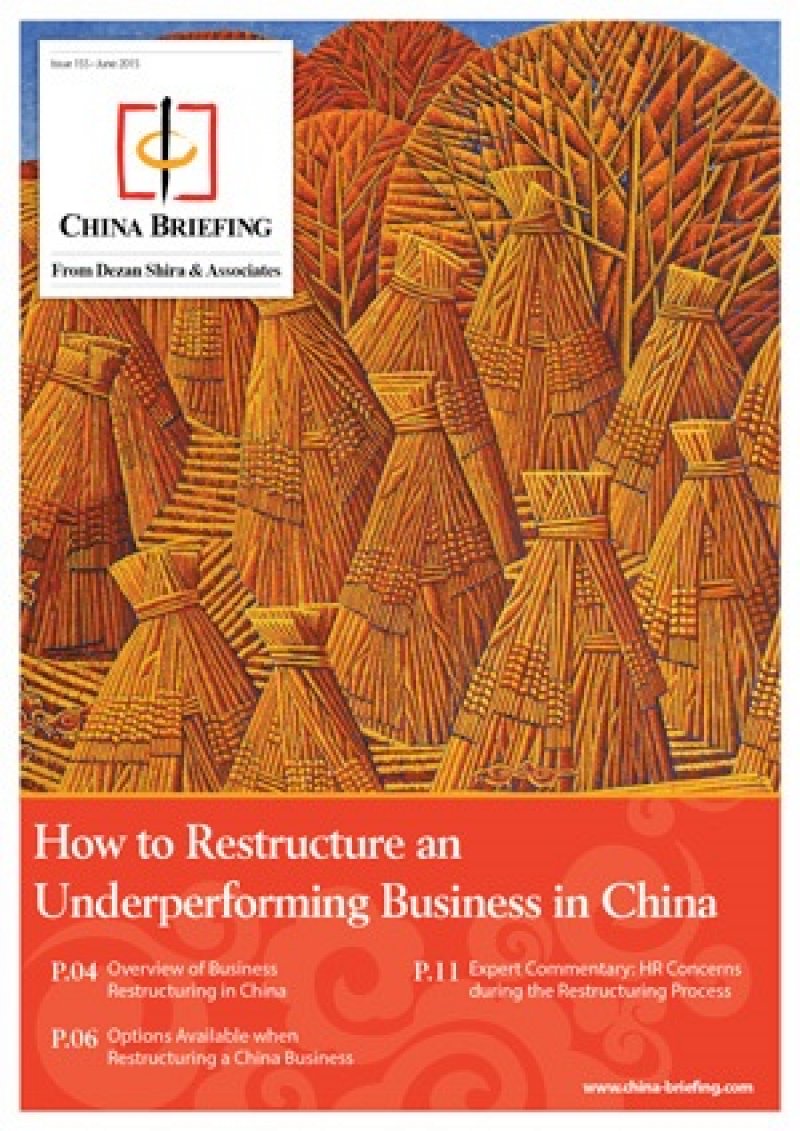Smoothly Converting from an RO to a WFOE: Employee Transfer and Timing
 By Isabelle Ding
By Isabelle Ding
Associate
International Business Advisory
Dezan Shira & Associates
For foreign investors planning to “convert” their previously established Representative Office (RO) to a Wholly Foreign Owned Enterprise (WFOE), the order of events and their relative timing are important considerations for ensuring a smooth transition from the former to the latter. At the heart of this transition process is the transfer of employees from RO to the new WFOE, which determines both the flow of events as well as the timing of their occurrence.
The reason for this is simple: if a foreign investor intends to retain some or all of its employees currently indirectly employed by the RO through a labor dispatch agency such as FESCO and transfer them to the new WFOE without causing any gap in the term of employment relations and/or disruptions to the daily running of business activities, then typically the new WFOE would have to be set up first to allow the employees being transferred to the new entity.
![]() RELATED: Business Advisory Services from Dezan Shira & Associates
RELATED: Business Advisory Services from Dezan Shira & Associates
However, a new WFOE would not want to hire employees before it can start paying the wages out of its own bank accounts, as doing so could expose the WFOE to unnecessary legal and human resource risks. Nor could the RO enter into deregistration process before legally terminating the employment relationship with the local employees, albeit indirectly governed by labor dispatch contracts.
Generally speaking, the new WFOE would need to be incorporated and subsequently complete most of the post-licensing formalities a few weeks before the RO could formally apply for de-registration to allow employees being transferred from the RO to the WFOE. For optimal results, perhaps employee transfer processes could start right after the WFOE has obtained its capital account and basic RMB bank account, as this means capital could be readily transferred from oversea headquarters to fund the daily operations of the WFOE, including employee salaries.
To initiate the employee transfer process, the RO could start by notifying FESCO to terminate employment relations with all employees. Depending on the specific situation of the RO, it may choose to selectively transfer some employees while terminating employment relations with the rest. In the optimistic case where no employees disagree with the transfer and/or termination, the discharge by FESCO can be implemented relatively quickly. However, if employees disagree with the transfer or termination, more time would be required to negotiate and settle terms with these employees. In any case, for the process to go smoothly, it is important for foreign investors to clearly communicate the company’s restructuring plan and to reach an agreement on both the transfer and the termination.
![]() RELATED: Tax Benefits of Changing from an RO to a WFOE
RELATED: Tax Benefits of Changing from an RO to a WFOE
As soon as the employment relations are terminated at the labor agency, employees can start working at the new WFOE almost immediately. Foreign investors are reminded that, in accordance with Chinese law, the new employment contract should be signed within 30 days from the date employee starts working for the new WFOE. Otherwise, employers could be liable to pay double the wages for every month an employee works without a contract.
As the last step to complete the employee transfer, a WFOE would need to set up the two social welfare accounts, i.e. corporate social insurance account and corporate housing fund account, and affiliate employees’ individual accounts to that of the company’s. Employees’ personal files, called dang’an in Chinese also need to be transferred to the new WFOE.
|
Asia Briefing Ltd. is a subsidiary of Dezan Shira & Associates. Dezan Shira is a specialist foreign direct investment practice, providing corporate establishment, business advisory, tax advisory and compliance, accounting, payroll, due diligence and financial review services to multinationals investing in China, Hong Kong, India, Vietnam, Singapore and the rest of ASEAN. For further information, please email china@dezshira.com or visit www.dezshira.com. Stay up to date with the latest business and investment trends in Asia by subscribing to our complimentary update service featuring news, commentary and regulatory insight. |
![]()
 An Introduction to Doing Business in China 2015
An Introduction to Doing Business in China 2015
Doing Business in China 2015 is designed to introduce the fundamentals of investing in China. Compiled by the professionals at Dezan Shira & Associates, this comprehensive guide is ideal not only for businesses looking to enter the Chinese market, but also for companies that already have a presence here and want to keep up-to-date with the most recent and relevant policy changes.
How to Restructure an Underperforming Business in China
In this issue of China Briefing magazine, we explore the options that are available to foreign firms looking to restructure or close their operations in China. We begin with an overview of what restructuring an unprofitable business in China might entail, and then take an in-depth look at the way in which a foreign company can go about the restructuring process. Finally, we highlight some of the key HR concerns associated with restructuring a China business.
 Human Resources and Payroll in China 2015
Human Resources and Payroll in China 2015
This edition of Human Resources and Payroll in China, updated for 2015, provides a firm understanding of China’s laws and regulations related to human resources and payroll management – essential information for foreign investors looking to establish or already running a foreign-invested entity in China, local managers, and HR professionals needing to explain complex points of China’s labor policies.
- Previous Article China Regulatory Brief: VAT Reform Expanded to Financial Sector, Shanghai New Foreign Residence Permit Rules
- Next Article The Shanghai and Guangdong Free Trade Zones: A Comparison










